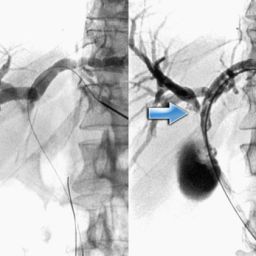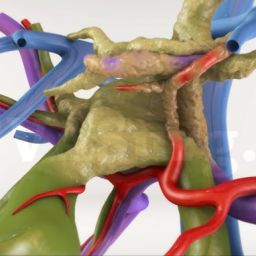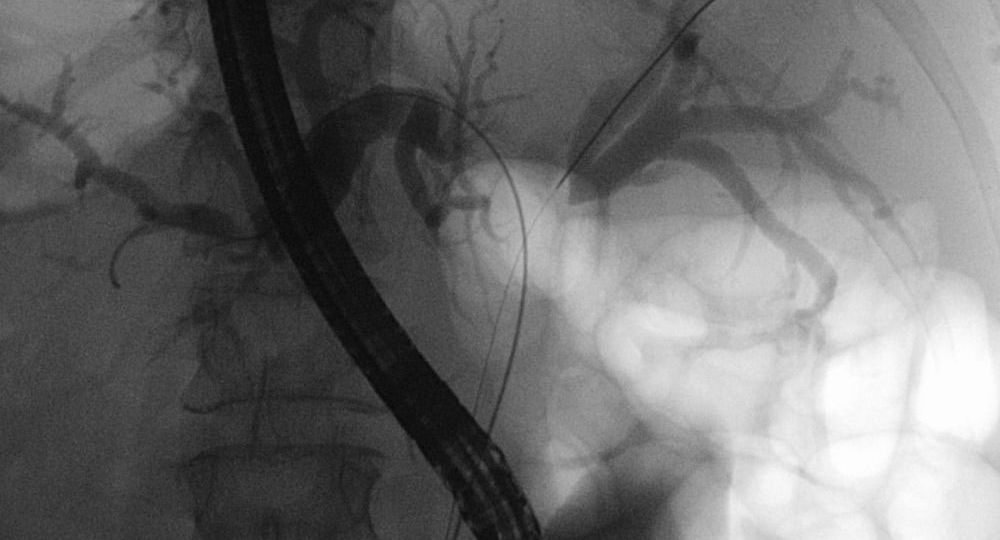
1. Introduction to Klatskin Tumor
1.1 Definition and Characteristics
Klatskin tumor is a specific type of cholangiocarcinoma that develops at the bifurcation of the bile ducts, where the right and left hepatic ducts meet. These tumors are often characterized by their location at the hilum of the liver, making them difficult to diagnose early and treat effectively.
- Symptoms: Early stages of Klatskin tumor may not exhibit noticeable symptoms. As the tumor progresses, however, symptoms like jaundice, abdominal pain, weight loss, and itching often appear due to bile duct obstruction.
- Prognosis: Klatskin tumors generally have a poor prognosis, especially if diagnosed at advanced stages due to their invasive nature and difficulty in achieving complete resection.
1.2 Anatomy of the Bile Ducts
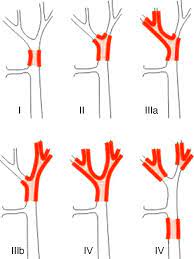
Understanding the anatomical structure of the bile ducts is essential to understanding how Klatskin tumors spread. The bile ducts, which are responsible for carrying bile from the liver to the gallbladder and small intestine, are divided into intrahepatic (within the liver) and extrahepatic (outside the liver) sections.
- Perihilar region: The perihilar area is where the right and left hepatic ducts converge, and it is the primary location for Klatskin tumors.
- Bile duct branches: The bile ducts spread throughout the liver and into the intestines, providing multiple pathways for tumor invasion and metastasis.
2. Spread Potential of Klatskin Tumor
2.1 Local Spread (Invasion into Adjacent Structures)
Klatskin tumors have a propensity to invade surrounding structures early in their progression, contributing to the difficulty in surgical resection. The tumor spreads locally to adjacent tissues, which include:
- Liver tissue: As the tumor grows, it often invades the liver parenchyma, affecting liver function and further complicating surgical removal.
- Lymph nodes: The tumor can spread to nearby lymph nodes, particularly those in the region of the bile duct bifurcation.
- Gallbladder: The gallbladder is located near the bile duct bifurcation and may be affected by the tumor, especially in advanced cases.
- Portal vein: One of the most critical structures that may be affected is the portal vein, which carries blood from the gastrointestinal tract to the liver. Invasion of the portal vein by Klatskin tumor often complicates surgical options and can lead to portal hypertension.
2.2 Distant Metastasis (Spreading to Distant Organs)
In addition to local spread, Klatskin tumors have a tendency to metastasize to distant organs, although this is less common than local invasion. The potential for distant metastasis includes:
- Lungs: The lungs are a frequent site of metastasis for Klatskin tumors, with the cancer spreading through the bloodstream or lymphatic system.
- Peritoneum: The peritoneum, the lining of the abdominal cavity, may become involved in more advanced stages of the disease.
- Bones: While less common, distant spread to bones may occur, leading to painful complications.
- Other distant organs: The liver’s blood supply through the portal vein allows cancer cells to circulate to distant sites such as the brain, although this is rare.
2.3 Biological Mechanisms of Tumor Spread
The spread of Klatskin tumor is influenced by a variety of biological mechanisms that promote metastasis:
- Angiogenesis: As the tumor grows, it stimulates the formation of new blood vessels (angiogenesis) to provide oxygen and nutrients. This process can facilitate the spread of cancer cells into the bloodstream, allowing them to reach distant organs.
- Lymphatic invasion: Tumor cells may invade the lymphatic system, which plays a significant role in the spread of the disease to nearby lymph nodes and distant organs.
- Epithelial-mesenchymal transition (EMT): EMT is a cellular process that allows tumor cells to acquire properties of migration and invasion, enhancing the tumor’s ability to spread locally and distantly.
3. Factors Influencing the Spread of Klatskin Tumor
Several factors contribute to the aggressiveness and spread potential of Klatskin tumor. These factors may include:
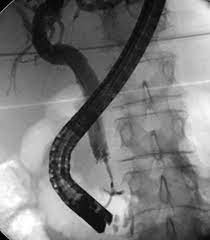
3.1 Tumor Size and Stage
The size and stage of the tumor are major determinants of its spread potential. Early-stage tumors tend to be more localized, while larger, more advanced tumors have a higher likelihood of metastasis to distant organs.
3.2 Lymph Node Involvement
The involvement of regional lymph nodes is a critical factor that indicates the tumor’s ability to spread. Lymph node metastasis is generally a marker of poor prognosis and often signifies the need for more aggressive treatment.
3.3 Molecular and Genetic Factors
The molecular and genetic characteristics of Klatskin tumors can influence their behavior and spread. Research has shown that certain genetic mutations, particularly those related to the activation of oncogenes or the suppression of tumor suppressor genes, can make the tumor more aggressive.
- KRAS mutations: Mutations in the KRAS gene, which is involved in cell signaling, are common in cholangiocarcinoma and are associated with poorer prognosis and increased metastatic potential.
- TP53 mutations: The TP53 gene, which is involved in regulating the cell cycle, is frequently mutated in cholangiocarcinoma and has been linked to a higher likelihood of spread.
3.4 Treatment Response
The tumor’s response to treatment can significantly impact its potential for spread. Tumors that are resistant to chemotherapy or radiation therapy are more likely to progress and spread.
- Surgical resection: In cases where the tumor is resectable, surgery offers the best chance for a cure. However, incomplete resection can lead to local recurrence and metastasis.
- Chemotherapy: Chemotherapy can shrink the tumor and prevent its spread, but it is often less effective in advanced stages.
- Targeted therapies: New therapies that target specific genetic mutations associated with Klatskin tumors are being researched and may offer improved outcomes for patients.
4. Diagnosis and Staging
The ability to accurately diagnose Klatskin tumors and assess their spread is vital for determining treatment options and predicting outcomes.
- Imaging: Imaging techniques such as ultrasound, CT scans, MRIs, and PET scans are essential for identifying the tumor’s location and assessing whether it has spread to nearby structures or distant organs.
- Endoscopic retrograde cholangiopancreatography (ERCP): This procedure can help diagnose blockages in the bile ducts and provide biopsy samples to confirm the presence of cancer.
5. Management and Treatment Options
The management of Klatskin tumors depends on the extent of their spread and their response to treatment. Options include:
- Surgical resection: The most effective treatment for localized tumors. However, the location of Klatskin tumors often makes complete resection difficult.
- Liver transplantation: In cases where the tumor is confined to the bile ducts but not amenable to resection, liver transplantation may be considered.
- Chemotherapy and radiation therapy: These treatments are typically used to shrink tumors, relieve symptoms, and prolong life.
- Palliative care: For advanced cases where the tumor is not resectable, palliative care may be employed to manage symptoms and improve quality of life.
6. Prognosis and Survival
The prognosis of Klatskin tumors is generally poor due to the tumor’s tendency to spread early and its resistance to many forms of treatment. However, outcomes can vary depending on factors such as:
- Tumor stage at diagnosis
- Response to treatment
- Overall health of the patient
Klatskin tumors are rare but aggressive cancers with a significant potential for local invasion and distant metastasis. Understanding the mechanisms behind their spread is crucial for early detection, effective treatment, and improving patient outcomes. Ongoing research into genetic markers, new therapies, and better diagnostic techniques will hopefully offer hope for patients affected by this challenging disease.

